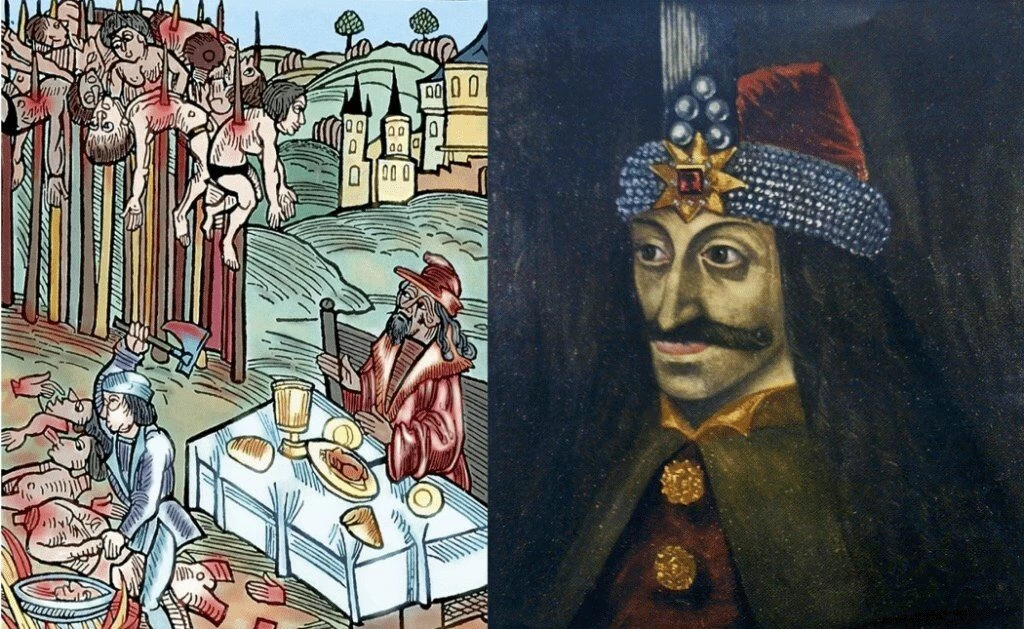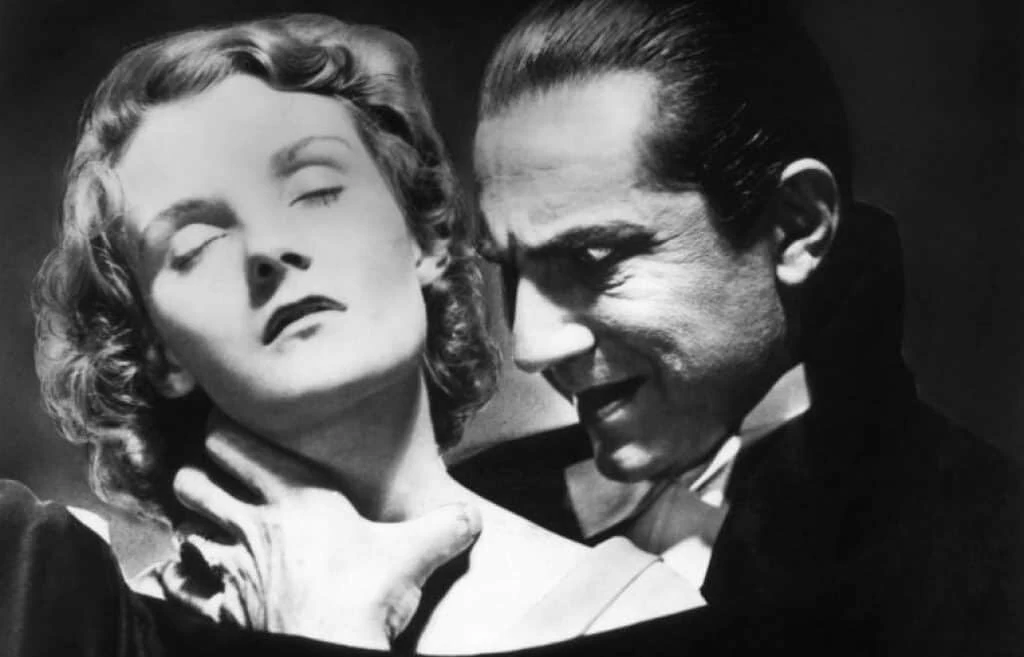Dracula is much more popular at Halloween than he is in March. And there is no surprise there. He is one of the primary evil beings living in pop culture. The history of vampires goes back perhaps thousands of years to ancient superstitions, but what is the origin of Dracula as we know him today? In general, people believe the history of Dracula is an open and shut case, beginning and ending with Vlad Tepes the Impaler. However, there may be more to the story than meets the eye. It seems Bram Stoker also used other vampires and Irish legends as a basis for Dracula.

History of Vlad the Impaler a.k.a Vlad Dracula
Most scholars believe that Bram Stoker based his evil count Dracula on a real-life 15th-century prince in Wallachia, Romania. Vlad Dracula (Vlad Son of the Dragon) or Vlad Tepes (Vlad the Impaler), as his story has come down through history, was a terrible man and a savage ruler.
His brutality against enemy troops consisted of having them sit awkwardly on stakes with sharp points, and as their leg muscles gave out, the point of the stake would impale them through the length of their body. Thus, he was nicknamed Vlad Tepes, which means Vlad the Impaler.
However, impaling was not his only method of torture and murder. Vlad was as creative as he possibly could be. People also knew him to boil his victims or cut off their limbs and other body parts. Additionally, Vlad mutilated organs, skinned and scalped people, or simply had animals eat them. It is not clear where he initially got the idea for this kind of torture. But the reports say that he even used these methods on innocent women and children. Saxon records indicate that Vlad Tepes killed between 40,000-100,000 people. It is uncertain if he really drank the blood of his victims or if fanciful people created the tale later.
How Bram Stoker Named Dracula
Bram Stoker took note of Vlad’s name, Dracula, and used it for his character. Vlad acquired the name Dracula because of his father’s name, Vlad II Dracul. It was Sigismund, King of Hungary and the future Holy Roman Emperor, who initiated Vlad II into his society of “knights.” The name of the society was The Order of the Dragon, and their purpose was to fight the Ottoman Empire during the Crusades. Hence, Vlad II took the name Dracul, which means the dragon or dragonist. As noted, Dracula means son of the dragon.
Sometime after his death, Vlad took on the nickname Vlad the Impaler. Evidently, that was what he was most famous for.
What Did Vlad the Impaler Look Like?
Vlad Dracula engaged in various wars and battles of the time, and enemy troops sometimes imprisoned him. During one of his imprisonments, a bishop described him:
“He was not very tall, but very stocky and strong, with a cold and terrible appearance, a strong and aquiline nose, swollen nostrils, a thin reddish face in which very long eyelashes framed large wide-open green eyes; the bushy black eyebrows made them appear threatening. His face and chin were shaven, but for a mustache.”
This is certainly not the image we have of Dracula today.

Does the History of Dracula Include Irish Legend?
Interestingly, not all scholars point to Vlad as the only basis for Dracula. Some believe that Irish-native Bram Stoker used Irish folklore to base his original vampire. Irish mythology and history point to a shadowy figure known as Abhartach. He was a 5th-century king who apparently was also a dwarf. The following is an excerpt of the tale from 1875:
[blockquote align=”none” author=””]”…This dwarf was a magician, and a dreadful tyrant, and after having perpetrated great cruelties on the people he was at last vanquished and slain by a neighboring chieftain…He was buried in a standing posture, but the very next day he appeared in his old haunts, more cruel and vigorous than ever. And the chief slew him a second time and buried him as before, but again he escaped from the grave, and spread terror through the whole country. The chief then consulted a druid, and according to his directions, he slew the dwarf a third time, and buried him in the same place, with his head downwards; which subdued his magical power, so that he never again appeared on earth.”[/blockquote]

A 2000 edition of the magazine “History Ireland” claims that some sources say Abhartach drank human blood during his daily reigns of terror.
How Other Vampire Fiction Inspired Stoker
In examining the history of Dracula, the novel, we must first examine early fiction. During the 1700s, well before Dracula came out in 1897, there was a period of vampire obsession in Europe. Many countries had longstanding superstitions about them. The fictional literary works about vampires that began during this period indicate that the concept of Dracula was not unique to Stoker.
Heinrich August Ossenfelder wrote a poem with a classical romantic vampire theme called The Vampire in 1748. In it, a vampire longs for a young woman. But he is frustrated because the young woman listens to her Christian mother who tells her that she should stay away from him. She warns her daughter that he is not mortal. The vampire vows to creep to her bed while she’s sleeping to give her the “kiss” that will drain the young woman’s blood and take her life with it.
Another piece, suspected of influencing Stoker, is Carmilla. This was a novella by Joseph Sheridan Le Fanu that was published in 1871 – 26 years before Dracula. This story also contains romantic themes of vampiric longing. However, unique in concept for its time, the female vampire, Carmilla, desires a female protagonist.
Although a number of fictional writings were produced during this time, one, in particular, relates directly to Stoker’s version. Gottfried August Bürger wrote a ballad in 1773 called Lenore. The phrase, “for the dead ride fast” was in the ballad, and Stoker used the same line in his novel, Dracula. (Wikipedia: “Vampire Literature”).
Bram Stoker’s Dracula in Entertainment
Is it possible that Vlad Dracul and Abhartach, in combination with literary work that began in the 1700s, are responsible for sparking Bram Stoker’s imagination?
Regardless of the true history of Dracula, the creation of Bram Stoker’s novel could not be confined to the printed page. The 1922 silent film “Nosferatu” stole much of its plot from Stoker’s book. So much of the plot, in fact, that Bram Stoker’s widow won a lawsuit against the makers of the film.
The best-known film version of the novel, a classical horror romance, is the 1931 film starring Bela Lugosi as the undead master of his castle. The long dark cape and white clothes that resemble some kind of tuxedo have been burned into the public’s mind as to how a vampire should look.

Lugosi, however, looked nothing like the description of Dracula in Stoker’s novel:
a tall old man, clean shaven, save for a long white mustache and clad in black from head to foot, without a single speck of color about him anywhere.
Dracula in Movies
Over time, the movies have been good for Dracula. According to an online movie information site, Dracula appears in more than 200 international films. There are undoubtedly more to come.
Clearly, there are many versions of the vampire story, and it seems that the history of Dracula may have many inspirations. Some researchers believe that the only thing about Vlad the Impaler that really inspired Bram Stoker was his name, Vlad Dracula (based on Stoker’s own notes), and his location in Romania. Either way, as is appropriate, the immortal Dracula continues to live on and on.
Other Related Articles:
The Mercy Brown Vampire Story
Dracula’s Castle: Is the Real One in Transylvania or Scotland?
Sources:
Curran, Bob, “Was Dracula an Irishman?” History Ireland, Summer 2000.
Ancient Origins, pulled 9/25/16.
Cliff Notes, pulled 9/25/16.